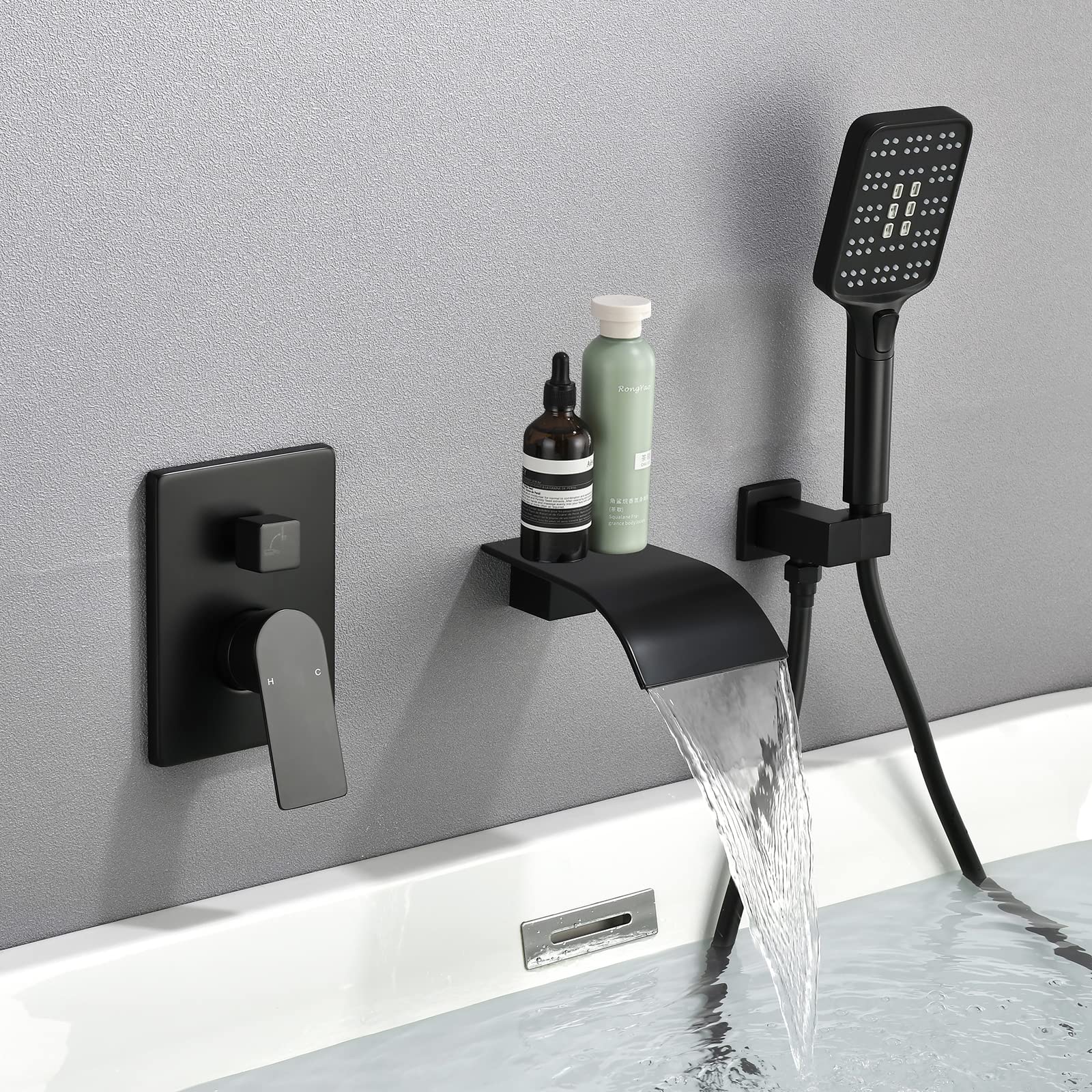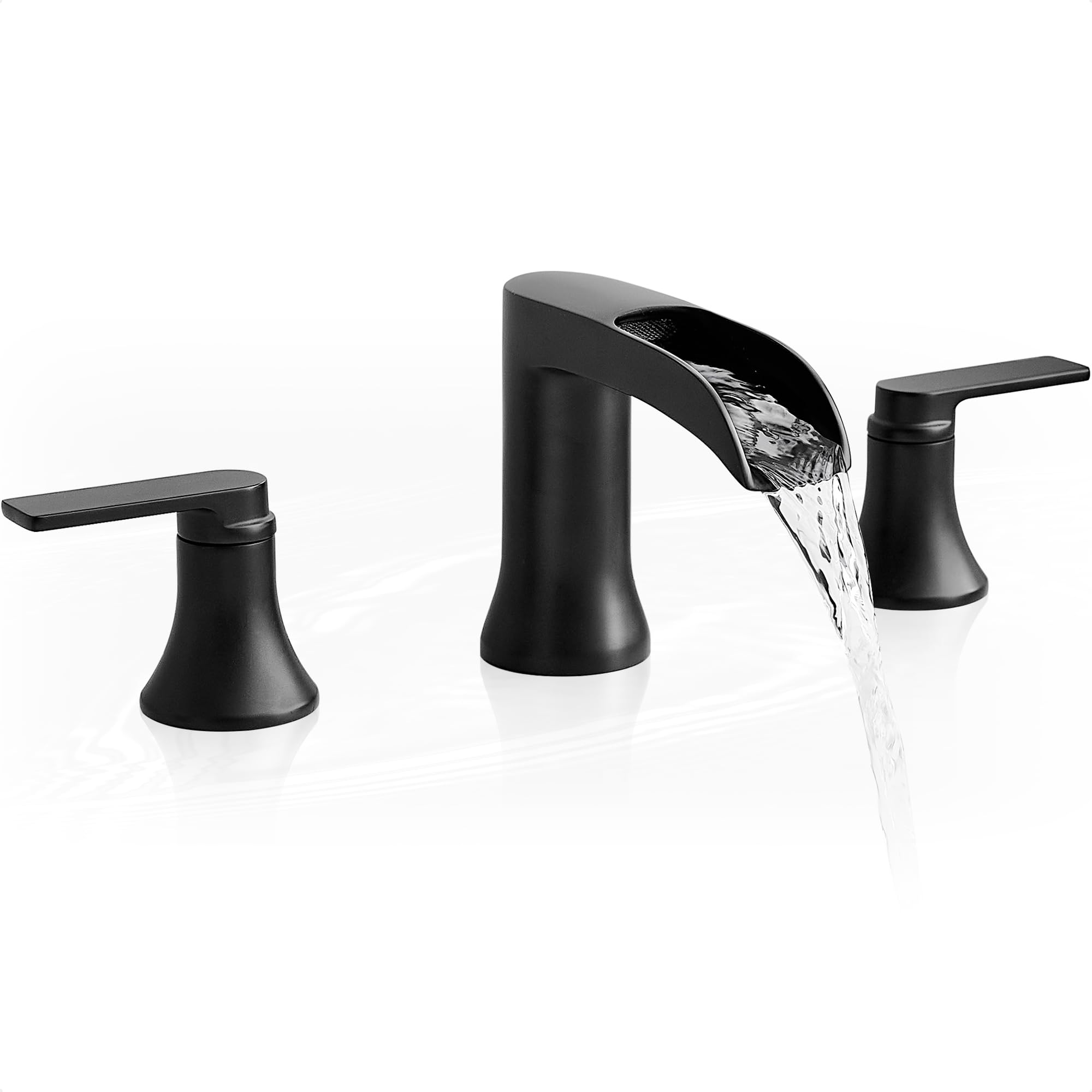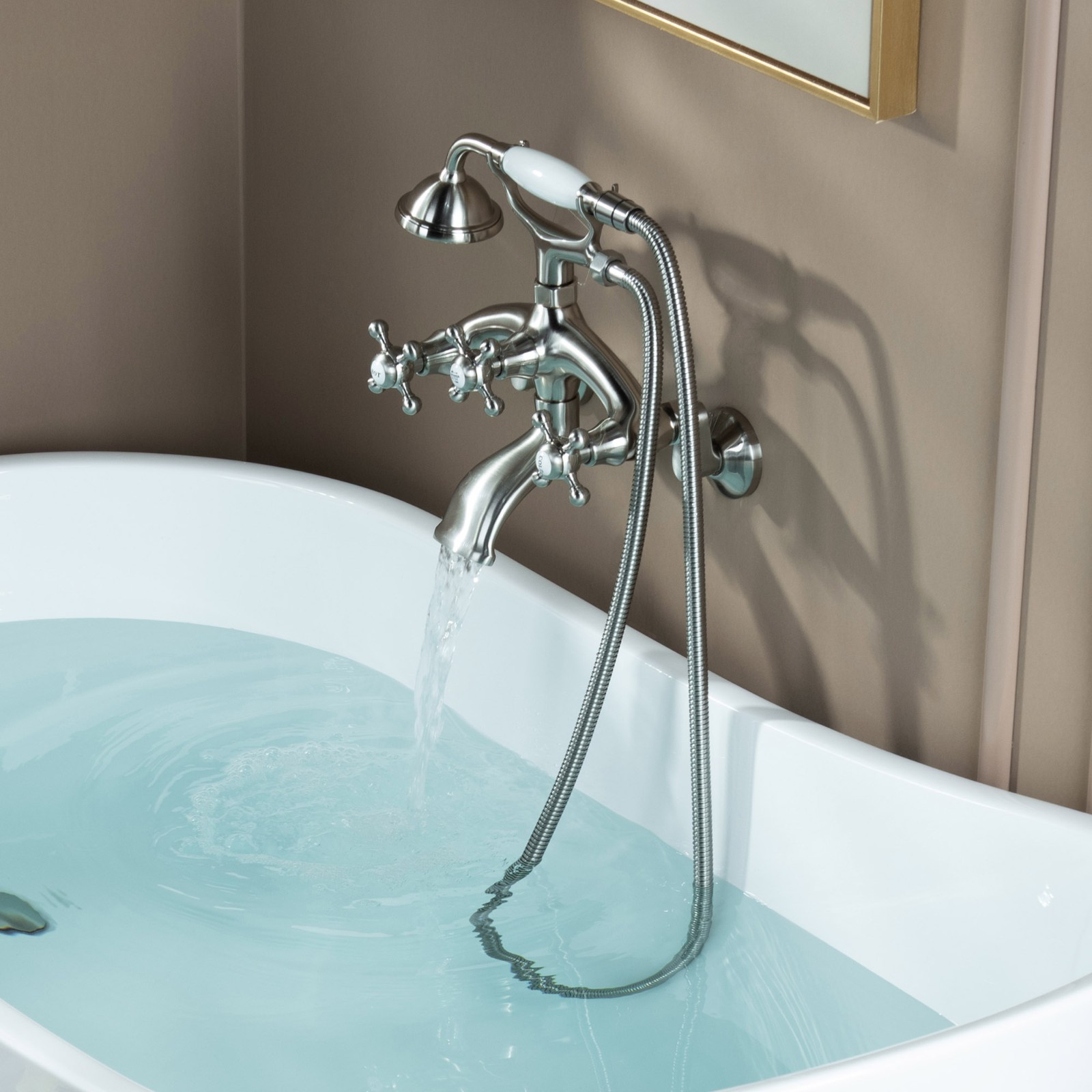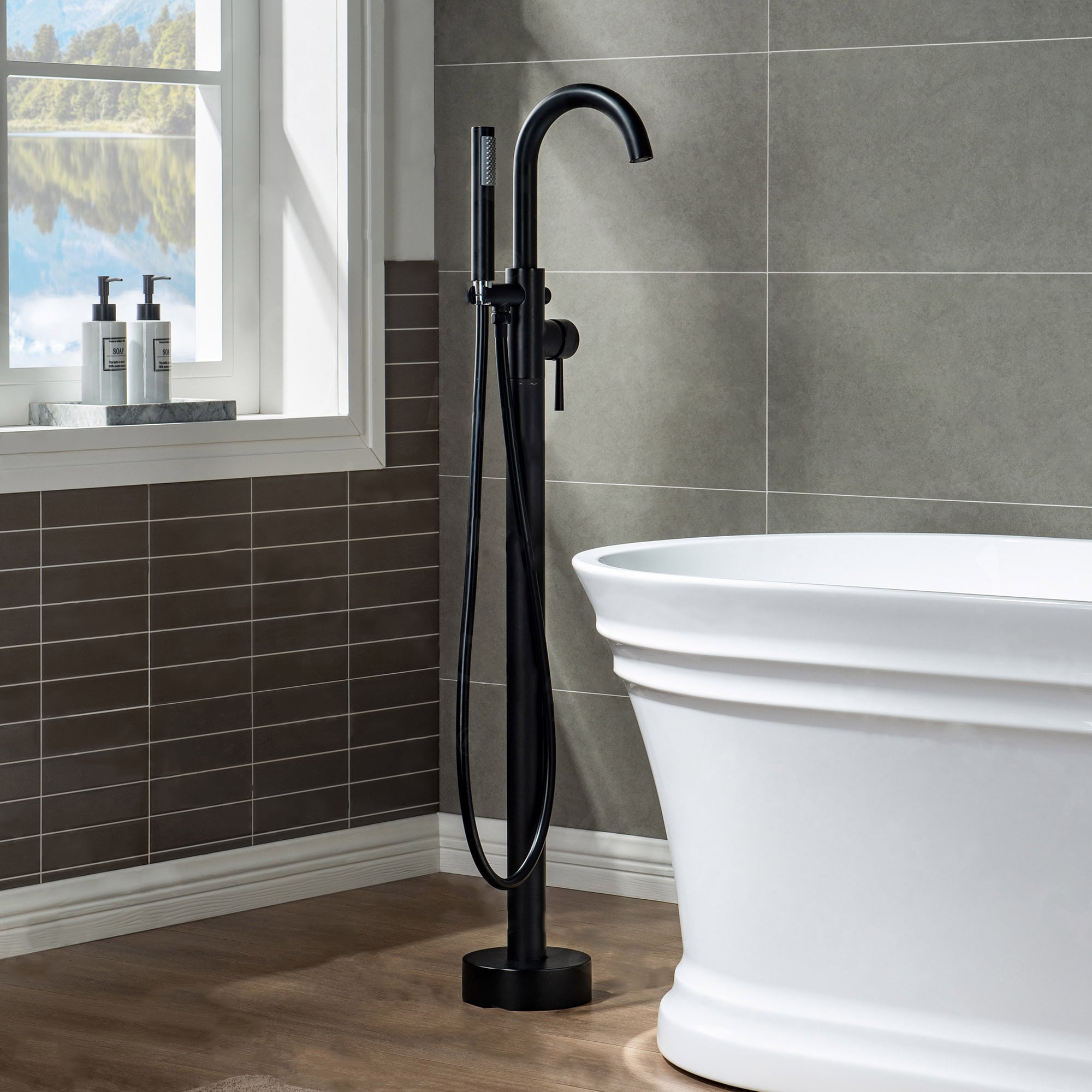How to replace old bathtub faucets? Replacing an old bathtub faucet can improve the appearance, functionality, and water efficiency of your bathroom. Whether you are updating your bathroom’s style or addressing a leaky or outdated faucet, understanding the process of replacing a bathtub faucet is essential. In this comprehensive guide, we will provide step-by-step instructions on how to replace old bathtub faucets. By following these guidelines, you can successfully complete the replacement project and enjoy a new, functional, and aesthetically pleasing bathtub faucet.

Note:
It’s important to exercise caution when working with plumbing. If you are uncomfortable or unsure about any step, consult a professional plumber.
Materials Needed:
- New bathtub faucet
- Adjustable wrench
- Screwdriver
- Plumber’s tape (Teflon tape)
- Silicone adhesive
Gather Necessary Information and Tools:
Before beginning the replacement process, gather the necessary information and tools. Consider the following:
- Faucet Type: Determine the type of bathtub faucet you have and the type you wish to install. Common types include single-handle, double-handle, and wall-mounted faucets.
- Measurements: Measure the distance between the existing faucet handles to ensure compatibility with the new faucet.
- New Faucet: Purchase a new bathtub faucet that matches your desired style, handles, and measurements.

Shut off the Water Supply:
Before making any changes to the plumbing, it is crucial to turn off the water supply. Locate the shut-off valves for the bathtub and close them. If you cannot find specific shut-off valves, turn off the main water supply to your home.
Remove the Old Faucet:
- Drain the Water: Open the faucet to drain any remaining water in the pipes.
- Remove Components: Use a screwdriver or adjustable wrench to disconnect the faucet handles, spout, and other components. Remove any screws or nuts securing the faucet to the bathtub wall. Keep track of the order in which you remove the components for reassembly or reference.
- Detach Water Supply Lines: Disconnect the water supply lines connected to the faucet using a wrench. Place a towel or bucket beneath the connections to catch any remaining water.
Clean and Prepare the Installation Area:
- Clean the Surface: Remove any dirt, grime, or adhesive residue from the bathtub surface. Ensure the area is clean and dry before installing the copper faucets.
- Apply Plumber’s Tape: Wrap plumber’s tape (Teflon tape) clockwise around the threads of the water supply lines to create a tight seal and prevent leaks.
Install the New Faucet:
- Position the Faucet: Insert the new faucet into the pre-existing holes in the bathtub wall. Ensure it is aligned correctly with the water supply lines and handles.
- Secure the Faucet: Attach the faucet securely to the bathtub wall using screws or nuts as per the manufacturer’s instructions. Tighten them with a screwdriver or wrench, taking care not to damage the faucet or bathtub surface.
- Connect Water Supply Lines: Attach the water supply lines to the corresponding connections on the new faucet. Use a wrench to tighten the connections, taking care not to over-tighten and cause damage.

Reassemble and Test the Faucet:
- Reattach Components: Reassemble the faucet handles, spout, and any other components according to the manufacturer’s instructions. Ensure they are properly aligned and secure.
- Turn on the Water Supply: Open the shut-off valves or turn on the main water supply to allow water flow to the new faucet.
- Check for Leaks: Carefully inspect all connections and components for any signs of leaks. If leaks are detected, tighten the connections further or seek professional assistance if needed.
Apply Silicone Adhesive (if applicable):
If your bathtub faucet requires a caulk or silicone adhesive seal between the faucet plate and the bathtub surface, follow the manufacturer’s instructions to apply the adhesive. This helps to create a waterproof and secure seal.
Clean and Polish:
After completing the installation, clean the outdoor faucets and surrounding area to remove any fingerprints, adhesive residue, or debris. Polish the faucet with a soft cloth to restore its shine.
What are the styles of old bathtub faucets?
Old bathtub faucets exude a sense of charm and nostalgia, adding character and elegance to any bathroom. These vintage and classic faucet styles not only serve a functional purpose but also serve as statement pieces that enhance the overall aesthetic of the space.

Clawfoot Tub Faucets:
Clawfoot tub faucets are synonymous with vintage charm and elegance. These faucets are designed specifically for freestanding clawfoot or pedestal tubs. Consider the following styles:
- Gooseneck Faucets: Featuring a high spout that curves elegantly, gooseneck faucets add a touch of classic grandeur. Choose chrome or polished brass finishes for an authentic vintage look.
- Telephone Faucets: Resembling the shape of a telephone, these faucets feature a cradle-shaped design. They often have cross handles and provide a timeless appeal.
- Wall-Mounted Faucets: Wall-mounted clawfoot tub faucets are another popular option. They offer a unique and attractive design and give a regal feel to the space.
Bridge Faucets:
Bridge faucets are characterized by a bridge-like structure that connects the hot and cold water handles with the spout. They offer a vintage and traditional aesthetic. Consider the following styles:
- Double Handle Bridge Faucets: These faucets feature separate hot and cold water handles on either side of the spout. Look for elegant, ornate detailing and finishes such as oil-rubbed bronze or polished nickel for an authentic vintage feel.
- Single Handle Bridge Faucets: Designed with a single handle on top of the faucet bridge, these faucets provide a more streamlined and contemporary take on the classic bridge design. They blend vintage charm with modern functionality.
Widespread Faucets:
Widespread faucets consist of separate hot and cold water handles that are spaced apart, with the spout in the center. They offer a luxurious and classic look. Consider the following styles:
- Cross-Handle Widespread Faucets: These faucets feature cross-shaped handles, which were popular in earlier eras. They add a touch of vintage sophistication and are available in various finishes, including polished chrome and brushed nickel.
- Lever-Handle Widespread Faucets: Lever-handle widespread faucets offer a more modern twist on the classic design. They provide ease of use and are available in a wide range of styles, finishes, and handle designs.

Conclusion:
Replacing an old bathtub faucet is a manageable task that can transform the appearance and functionality of your bathroom. By following this comprehensive guide, you can successfully replace the faucet and enjoy a new and improved bathing experience. Remember to gather the necessary information and tools, shut off the water supply, remove the old faucet, clean and prepare the installation area, install the new faucet securely, test for leaks, and apply any necessary adhesive. With careful attention to detail and adherence to the instructions, you can complete the replacement project with confidence. Enjoy your newly replaced bathtub faucet and the enhanced aesthetics and convenience it brings to your bathroom.
